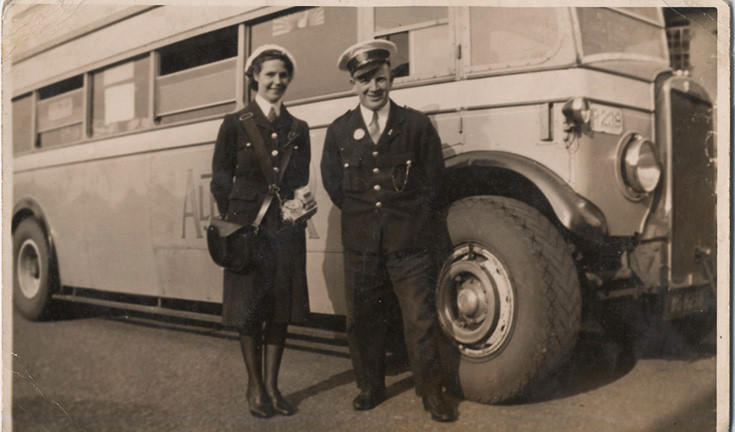These images tell the story of Dorrator House in Camelon.
Dorrator House in Camelon was owned by the Callendar family for several centuries until the early 18th century. The house was described as a large rural farmhouse and stood in a rural area overlooking the river Carron. The house was sold on by the Callendar family and rented out by the new owners in the mid-1700s. In 1760, one of the first tenants of Dorrator House was William Cadell who lived in the house whilst employed as the managing director of the newly established Carron Iron Works.
Dorrator House was linked to the military during its existence. In January 1746, during the Battle of Falkirk, soldiers from the Kintyre Company of the Argyll Militia stayed at the house. They barricaded the windows and doors and prepared to fight. Jacobite soldiers from the Balmerino’s Life Guards were sent to the house to deal with the kings soldiers. After a short fight the Kintyre soldiers surrendered and were subsequently imprisoned in Falkirk Parish Church.
In 1868, Falkirk raised money to create a new burial ground, with the loan repayments to be off set against future burial fees. They purchased several acres of lands to the south of Dorrator House and the new cemetery opened in 1870. By the 1920s Dorrator House was a ruin.
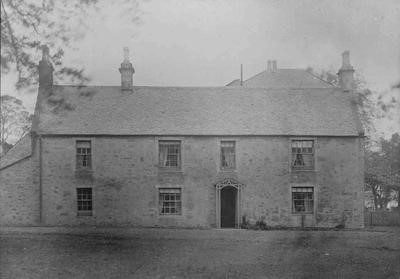

Dorrator House recorded in 1904. Originally the house had a long and winding driveway which started at Nailer Road, Camelon, and carried on through to Camelon Bridge. The more direct driveway was added to the house in the 1880s. The grounds of the house were laid out in traditional format with rectangular walled enclosures planted with trees. There were also offices, stables, a hen house and a wash house.


By 1844, the house belonged to the Earl of Zetland and was leased to the Rev Lewis Hay Irving. He was a minster of the new Free Church and carried out missionary work in Camelon. On 16th June 1845, his daughter was born in Dorrator House, and the birth announcement was published in the Falkirk Herald.
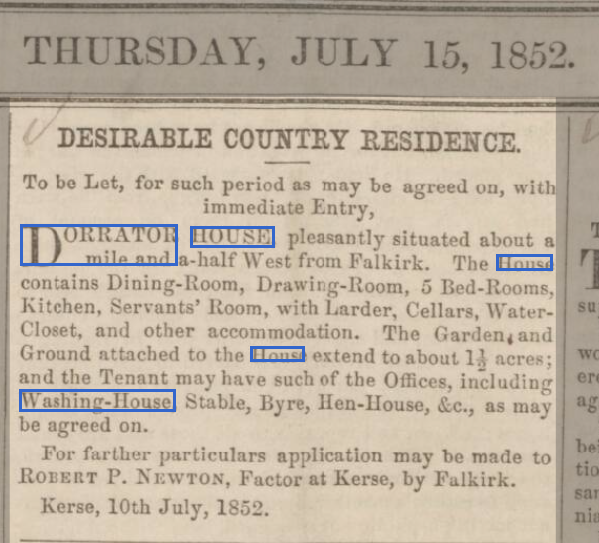

In July 1852, Dorrator House was up for lease again following renovation. The house was described as a desirable country residence with 5 bedrooms, drawing and dining rooms, along with servants’ accommodation. It also came with gardens and 1.5 acres of land along with access to stables, byres, and more.
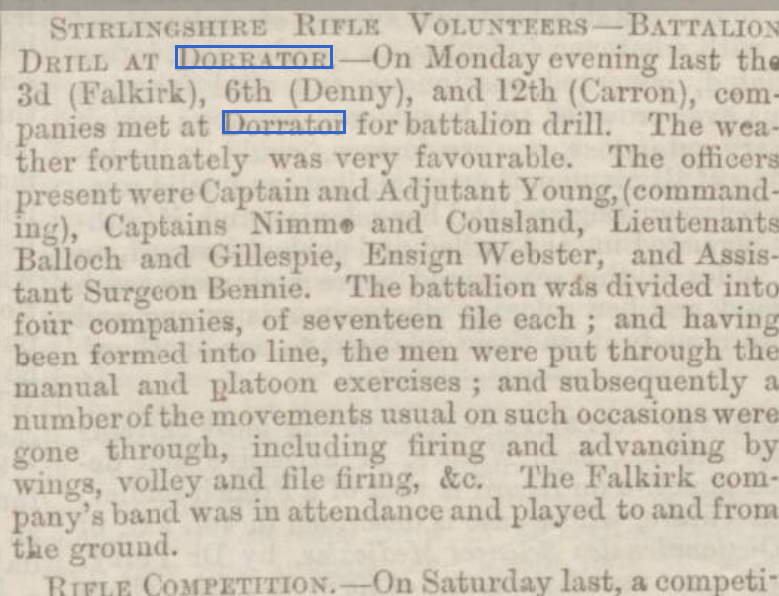

Over the years many drill and rifle competitions were held at Dorrator House. In June 1870, the Stirlingshire Rifle Volunteers held a battalion drill at Dorrator House. This was followed by a rifle competition between the Falkirk Volunteer Company for the Bronze Cross of the Edinburgh and Mid-Lothian Rifle association.
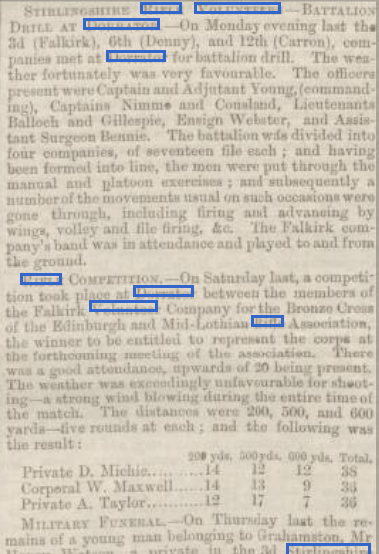

The weather is reported as being exceedingly unfavourable for shooting with strong winds. Over 20 competitors took part and the competition was won by Private D. Michie with a score of 38 over the three distances.
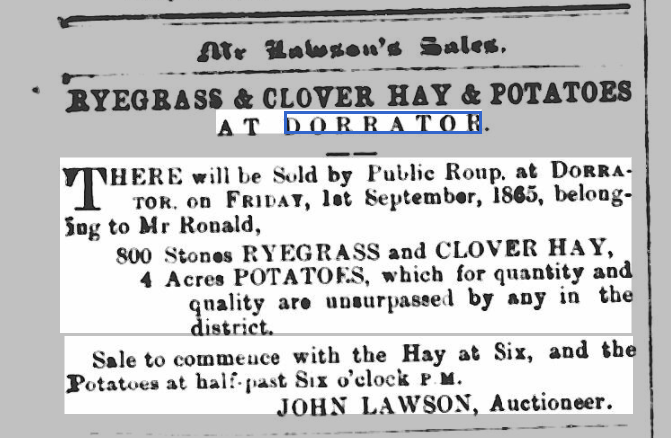



During the 1800s, there were several public roups (auctions) held at Dorrator House. These mainly sold produce grown on the farmlands owned by the house. These roups were advertised in the Falkirk Herald to encourage buyers.
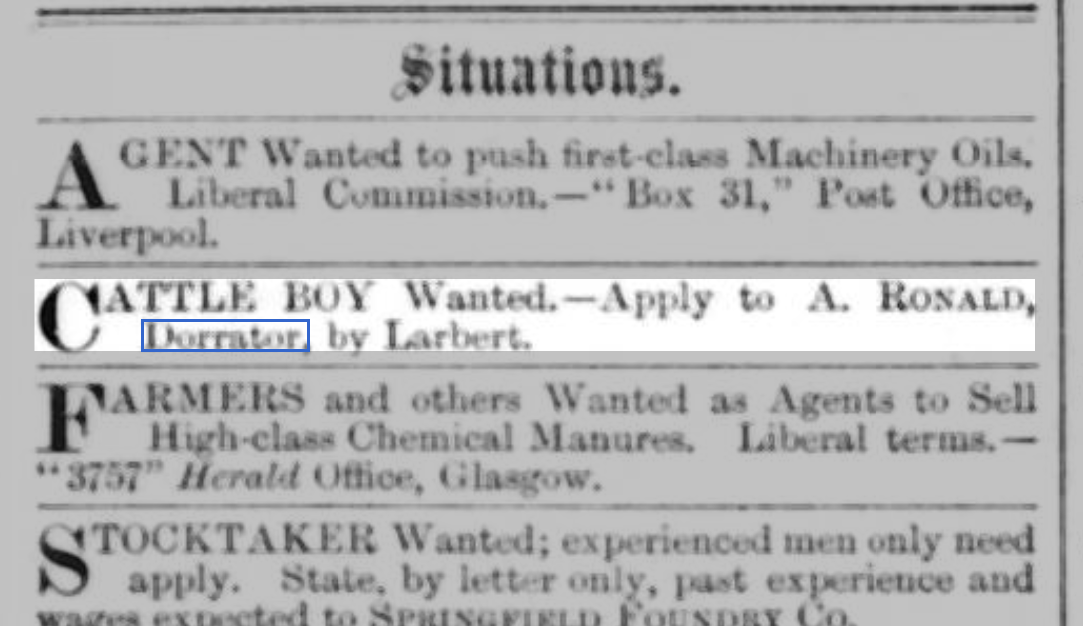

In January 1885, a position of cattle boy was advertised in the Falkirk Herald and Linlithgow Journal. At the time of this vacancy several acres of land had been sold off to make way for the new cemetery.
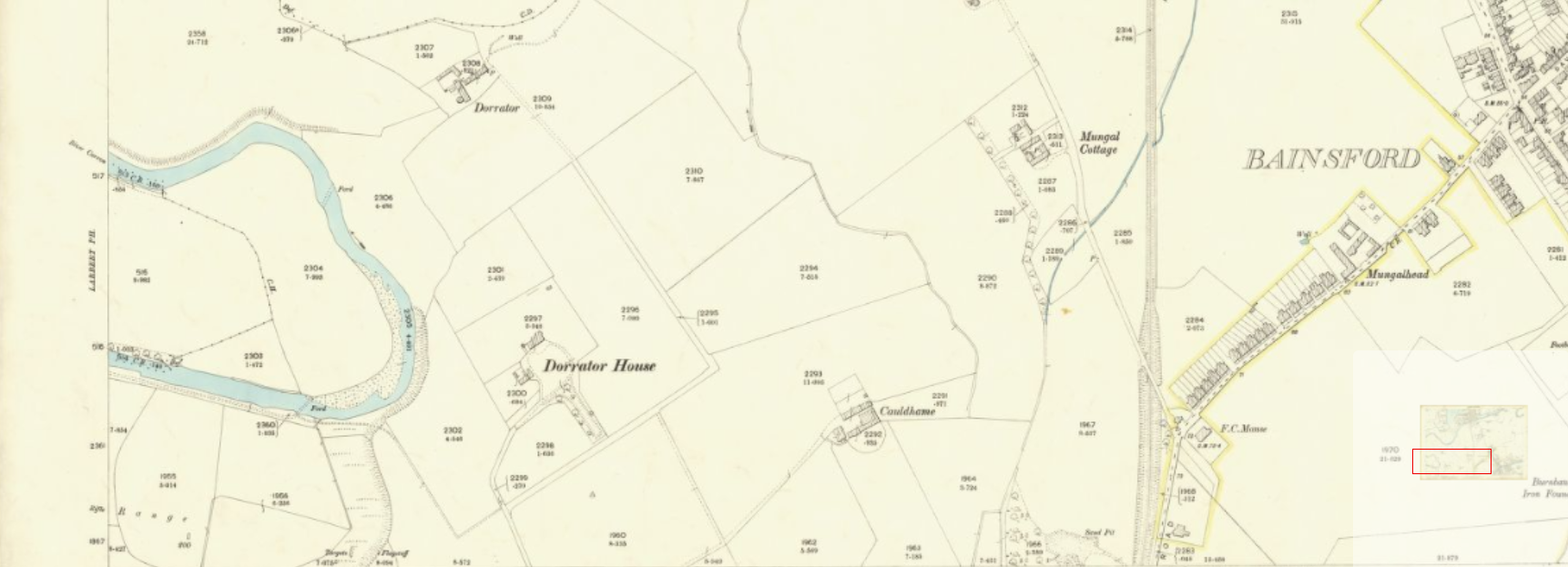

In 1897, Dorrator House stood overlooking a small cliff on the River Carron. By the 1920s, the house was shown as a ruin on maps. The house has now completely gone, with the Crematorium built where the house used to stand.
By Carol Bennie, Hidden Heritage: Camelon and Tamfourhill project volunteer.
With thanks to Geoff Bailey, whose article “Dorrator House” (on the Falkirk Local History Society website) provided much of the information in this story.

